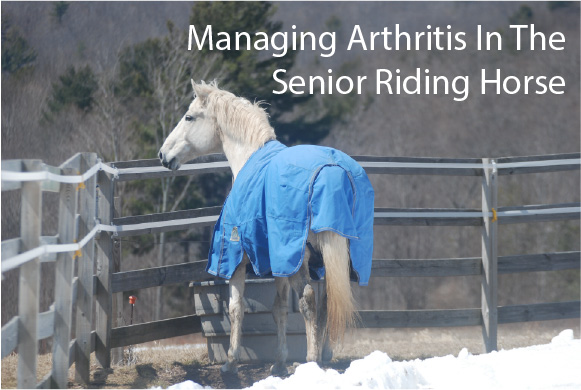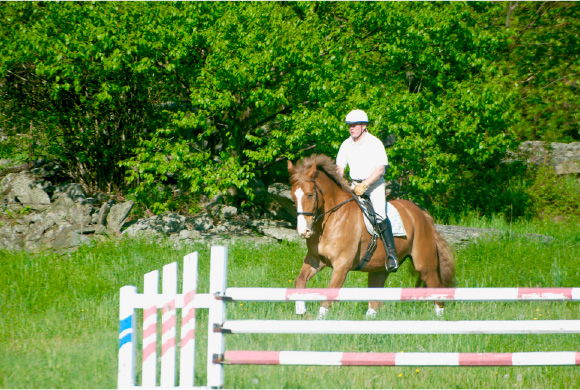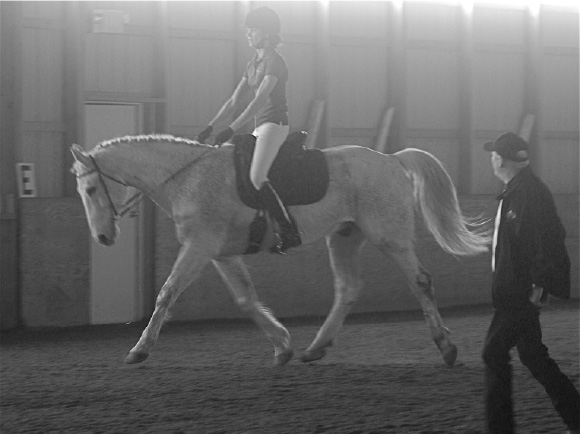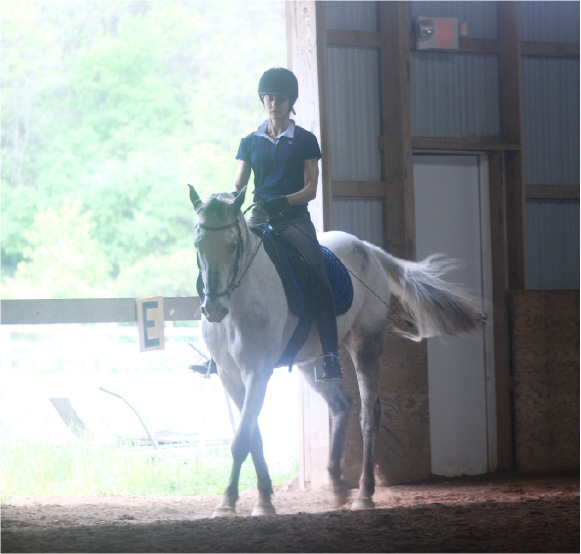Managing Arthritis In The Senior Riding Horse
By CH Staff

The senior horse requires special attention to keep him comfortable and to enable productive work under saddle in his vintage years.
The benefits of keeping your senior horse working are many. Not only will regular light exercise help to engage his mind and keep him mentally active, it will also help keep equine arthritis and unsoundness at bay.
A trained horse that is left to his own devices may become depressed, develop stable vices and will genuinely miss the interaction with humans in his daily life under saddle.
How much should you work your horse and what accommodations should you make to help him perform to his best present potential without causing discomfort or pain due to arthritis or deteriorating physical issues?
As his rider, you want to ensure you are not over-asking of your elderly horse and not adding to his stress level or discomfort. Here are some tips on how to help your horse trot along.
Be Kind and Diligent
Your horse may know his job under saddle well, but he may also believe he is expected to operate at the same pace as he did in his younger years. Modify the pace and length of each riding session, and reward your horse often for his efforts to convince him that the new, lesser pace, is appreciated and acceptable. Healthy rewards are always a great idea and we all know that the best way to a horse’s heart is through his stomach. Try special treats for your older horse that contains natural source of Glucosamine, Omega-3 fatty acids and biotin.

Your job is to relieve stress both mental and physical for your horse. Older horses stress more easily. Once your horse understands that he doesn’t need to operate on full throttle, he will settle down to a calmer and less stressful mount.
Time is Your Friend
Allow more time in your riding schedule to set your horse up for success.
His arthritic joints may benefit from a pre-ride leg and back massage, application of topical salves and liniments, and some light and careful leg stretches after you have warmed up your horse.
Allow for longer warm up and cool down times at the start and end of your riding session. Hand walk your horse before mounting to allow him to warm up without your weight and if you are doing stretch exercises on your horse doing them once his soft tissue has warmed up a bit is much kinder than trying to do it when you’ve just brought him out of standing in a stall.
Consider having a rider with less exacting requirement work the horse. For example, if a barrel racing horse is used to his rider he may become exceedingly excited as soon as the regular rider mounts. If you replace the rider with someone else and ask him to trail ride in a relaxed manner he may be happier and less stressed.
Remember when you ride your horse to allow time for him to answer your aids. Just as when a horse is young and takes time to process our requests, a senior horse will also need time for his mind to translate your requests and for his body to answer his own mental instructions.
Tack Check
Boot up your horse for additional support. Boots provide protection, support and warmth. Be certain you keep boots or wraps clean, and apply them properly so they do not constrict or become loose during work posing a hazard.
Check your saddle fit as senior horses exhibit a less muscled topline as they age.
Where to Ride
Ride your horse on the flat on good footing to minimize stress on his arthritic joints through jarring on hard surfaces. By avoiding excessive work on hills you will also lessen the action the horse’s joints need to provide for traction, and not add undue stress to soft tissues that are the support network for those joints.
How You Ride
It is important that you ride your horse well at any age, but particularly in his senior years. Poor riding is necessarily harder on a horse than good riding. For example, a poorly made transition may hurt the horse’s arthritic joints while a well balanced transition will help him make the change in pace with less stress on his body. The more the rider stays in balance with their horse the easier under saddle work is for the horse. So strive to do a great job in the saddle.

Minimize small circles, sharp turns when riding and avoid longe work on small circles. Give your horse time to make transitions and avoid abrupt stops and starts.
Avoid Long Lay-Offs
It is much better to keep a horse ticking along under saddle than to give him extended lay-offs and then have to bring him back to work and develop muscle tone.
Handwalking is the best method to bring a horse back to work and long-lining is better for the horse than longe work which requires circle work and thus more engagement and stress of the weight bearing joints.
Routines Help
If you stick to a routine the older horse will become less stressed as he knows what to expect. It also helps keep us on track!
Remember older horses have so much to teach us and certainly should not be discarded due to the infirmities of old age. A horse that is 15 years old or more, may be considered in his later years but there are many advanced level competition horses that have competed successfully well past that age. Age is a state of mind as well as a state of physical decline.
Extra Management Tips
Our beloved equines suffer joint breakdown and arthritis, soft tissue issues or vision and hearing loss as they age, just as we do.
A horse that has a less than perfect conformation or has an intensive performance background as a sporthorse in any riding discipline, will probably show more issues with arthritis due to the additional stress his joints have endured. If a horse has suffered a previous injury, this can incur additional arthritis issues as the horse ages.
Tips to Help Manage Arthritis in Horses:
· The more your horse can move around the better his joints will handle the stress of arthritis so if you can keep him at pasture or turned out it can help. For the same reason if you can keep your senior horse in light work it will also help slow down the arthritic damage to joints.

· Warmth Helps: If possible keep your horse warm and snug during winter months with a toasty blanket and provide shelter. When stabling use a soft, deeper bedding to protect his joints from cold or damp ground.
· Medical Management: There are a myriad of options to aid your horse in handling the discomfort or pain of equine arthritis. Treatments include administration of oral or injectable joint acid preparations, alternative organic treatments such as turmeric and yucca, PEMF and adjuvant therapies. Be aware that many supplements do not have the clinical studies to prove their efficacy in the successful treatment of arthritis in horses, so choose carefully.
Today many top equestrian athletes provide joint support therapies and medications to their equine partners throughout their horse’s careers. This preventive care greatly aids in the longevity of the horse’s riding life.
· Hoof Care: Be smart and keep your senior horse properly trimmed and/or shod. If the hooves are well-balanced and kept to the right angles and length, the breakover on the horse’s stride will be optimized which will in turn minimize additional joint strain which can aggravate arthritis.
· It is important that any pain caused by arthritis is addressed with the administration of NSAID or other vet recommended pain relief products to prevent your horse becoming unhappy in his work or uncooperative in his attitude.
· The Right Nutrition: Just as when we age our bodies have trouble processing certain foods and metabolizing the vitamins and nutrients we need, horses require additional support to keep their bodies functioning optimally. Not only will the right diet provide for the daily needs of your horse in a balanced manner, it will also help prevent colic or azoturia (Monday morning disease, tying-up, equine rhabdomyolysis syndrome), and help diminish stress on your horse’s systems.


